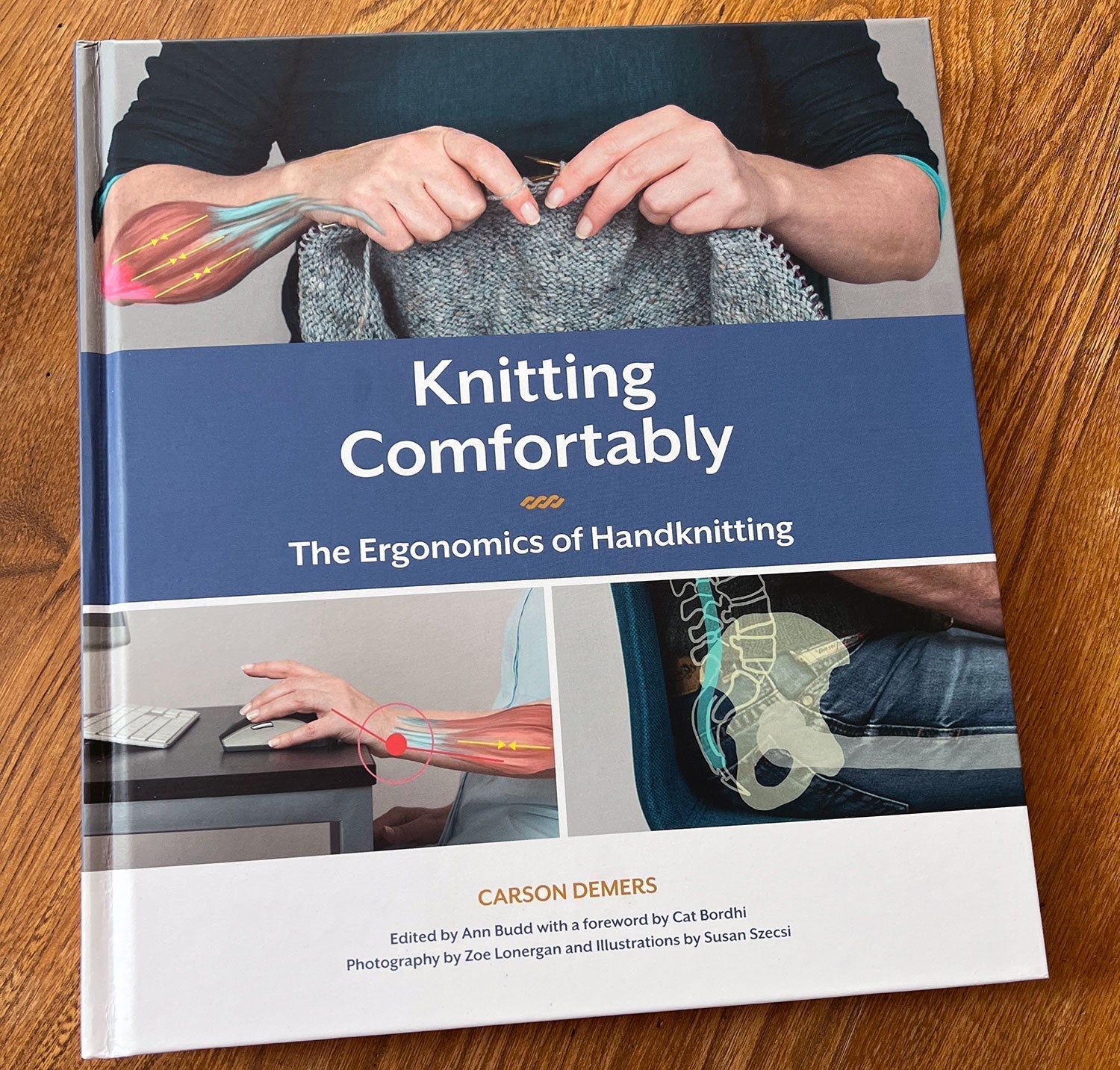Knitting Comfortably: The Ergonomics of Handknitting

One month ago, I found myself in the emergency room with unbearable back pain. I later learned it was caused by a herniated disc and osteoarthritis (OA) that had taken over my entire lower back. Would I ever be able to dye yarn again, let alone... knit...?

When Debbie and Elizabeth offered me the chance to do some writing for the Sweet Paprika website during my time away from the dye studio, I jumped—figuratively—at the chance to write about Knitting Comfortably: The Ergonomics of Handknitting, by physical therapist and ergonomist Carson Demers. I went straight to the pages on OA and degenerative disc disease, which are back-to-back in the book, and learned of the existence of CDT: cumulative trauma disorders. I realized the way I’d been sitting, for most of my life, was wrong!

Although I have yet to muster the courage to pick up my needles again, the book offered suggestions on needle and yarn holds that reduce contact stress, as well as healthier knitting postures. Did you know it’s better to knit while standing, or even walking? This was news to me.

Many of us knitters may feel resistance when it comes to changing our ways, but if you’re interested in doing things differently for the sake of your body, you’ve come to the right place. I have yet to try the “Swatchortunities” (shown above) scattered throughout the book, but they seem like a great place to start. These “swatch opportunities” are designed to help conquer a fear of dropped stitches, for example, or anticipate forceful exertion, or simply break sub-optimal habits that may be preventing us from knitting safely. Our bodies will thank us for any efforts we make to do better—as we gain efficiency as a bonus.

Knitting Comfortably starts by explaining the basics of ergonomics and anatomy, while drawing parallels between the fibre we knit with and the fibre we’re made of. It covers common problems we may encounter, like anatomic vulnerabilities, mismatched needles and yarn—yes, needle-to-project pairing is a thing!—and an unbalanced project slate. In addition to the swatch exercises and using stranded colourwork as a code for certain movements (shown above), it includes physical exercises and stretches we can do to stay in top knitting shape.
Weighing in at 1.34 kg, this hefty hardcover gives off university textbook vibes, complete with charts and diagrams—which I suppose is inevitable due to the subject matter. My back and I just hope it will someday come out in paperback!

2 Responses
Margaret Black
I totally agree with Janet. At home when I knit, I make sure I take breaks to do some yoga routines or treadmill time to get the sitting cobwebs shifted. I do the same if reading. Very important to remember that the body needs to move
Janet M
As an almost 80 year old former personal trainer who still jogs I have always believed in moving every 50 minutes for at least 10 minutes. This is whether you are standing still or in a chair. I have osteoporosis which has caused several spinal compression fractures. When I am engrossed in a knitting project I pay attention to moving my shoulders and hands frequently. So far it works. I will check out this book too. Hope you are feeling better soon and able to get back to doing what you love.
Leave a comment
Also in News

Choosing a Natural Dye Book
Have you ever tried dyeing your own yarn using natural colorants? Are you now looking for more inspiration? Or maybe you’ve always been curious, and are wondering where to begin. Below, we’ve introduced four books that could be exactly what you’re looking for!

Recipe: Watermelon Slushie
What do you do when you have a glut of watermelon? Freeze it and make watermelon slushie! I started doing this last summer and it's the perfect way to use up a watermelon, especially one that's a bit overripe. Plus, with a touch of lime and mint it really hits the spot on a hot day!




Ivy Oldford
Author